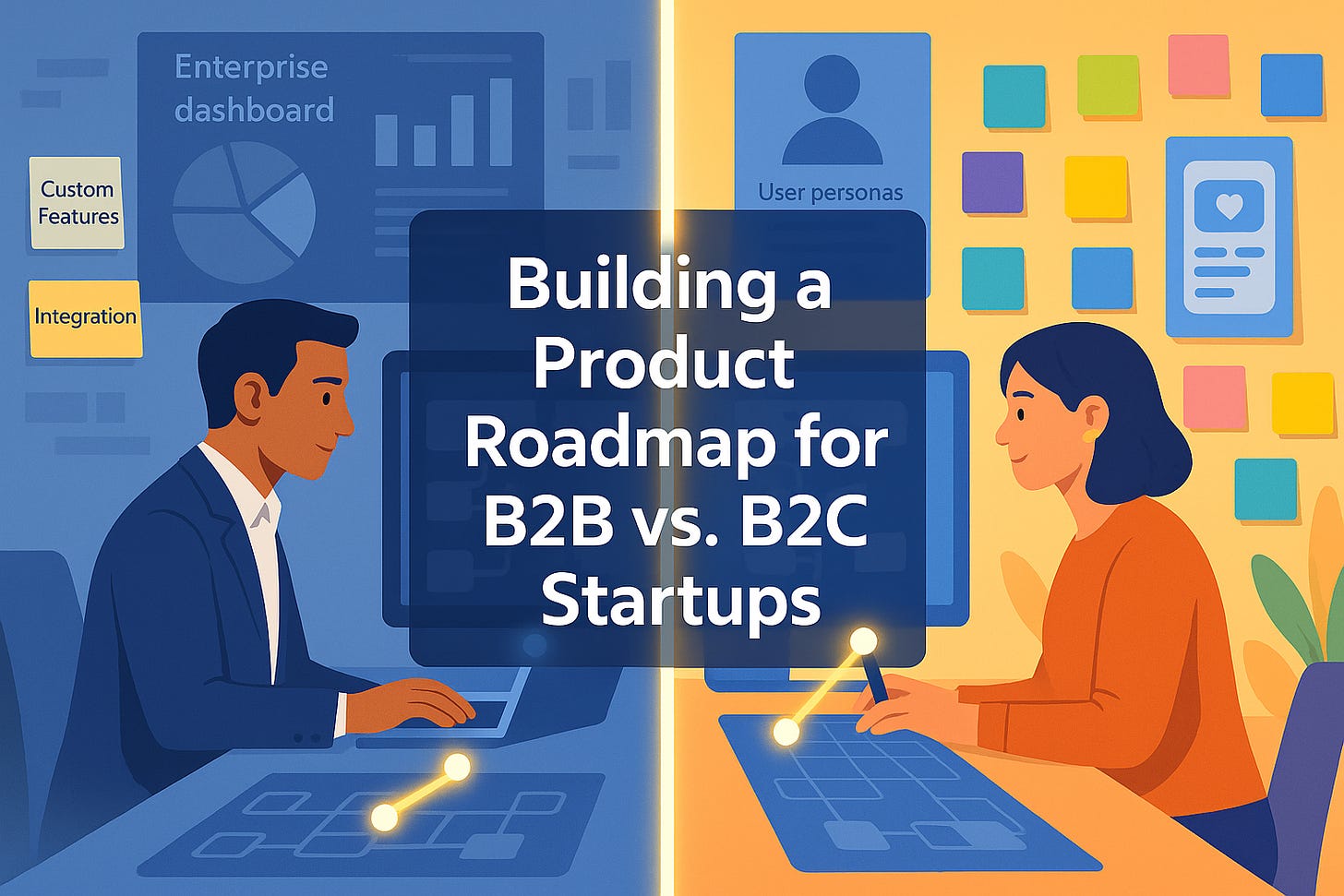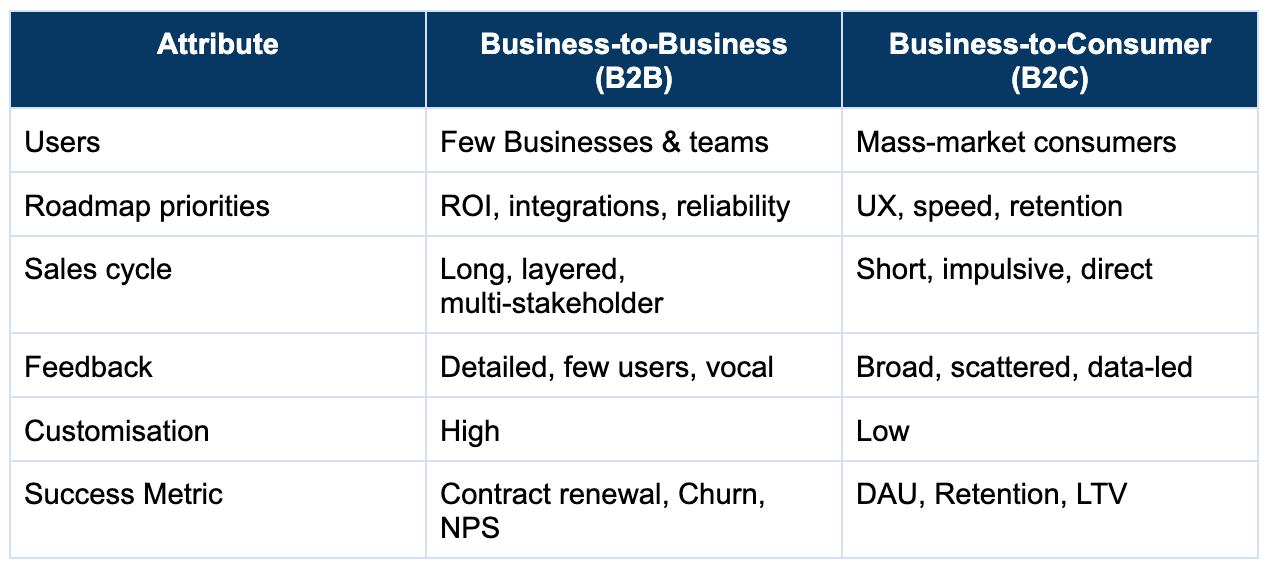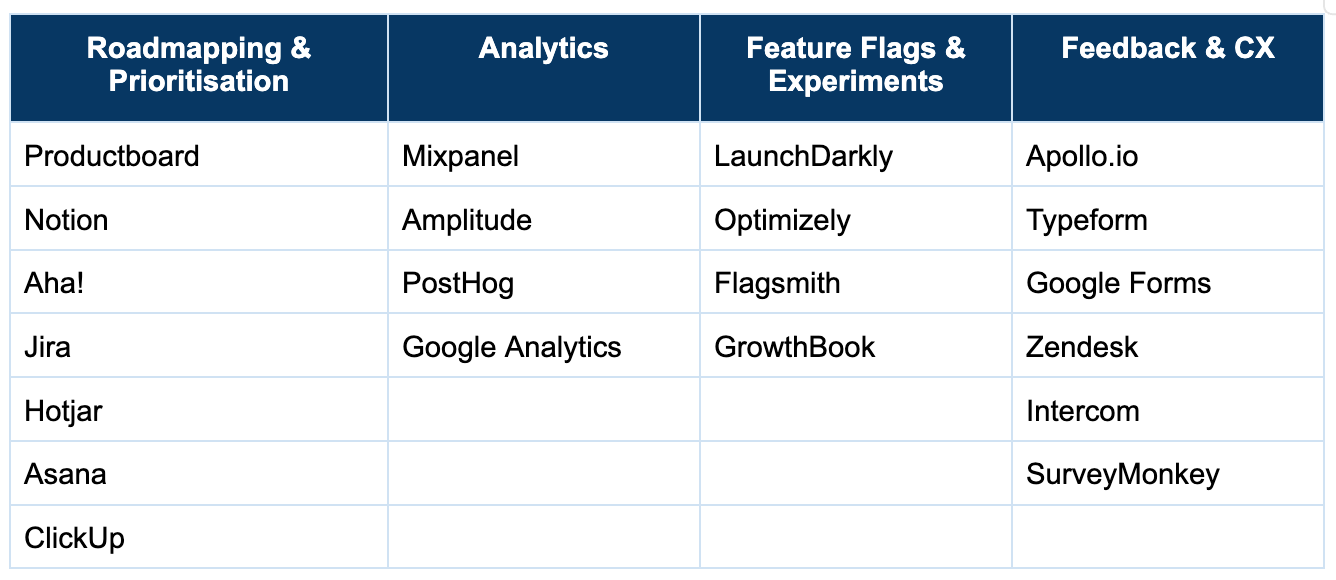Building a Product Roadmap for B2B vs. B2C Startups
Your roadmap is your strategy in motion. But B2B and B2C markets play by different rules. This article breaks down how to tailor your product plans based on who’s on the other end.
If you’re a founder in the early or growth stage, chances are you’re also playing the role of your startup’s first product manager- defining what to build, why it matters, and when it ships.
Let’s be honest: What’s more sacred than the roadmap for a PM? If you're building for businesses (B2B), your product strategy revolves around solving specific, high-value problems for a few clients. If you're building for consumers (B2C), it's all about scale, UX, and habits. A roadmap helps you take what customers really need and break it down into clear features and tasks your team can actually build and deliver.
This article breaks down the B2B vs. B2C roadmap decision-making process across two axes: stage (early vs. growth) and strategy (what’s suitable for the user vs. what's good for the business).
Let's Start with the Basics!
What is a Product Roadmap?
A product roadmap is a visual summary that maps out a product's vision, direction, and progress over time. It aligns internal stakeholders, communicates with customers, and helps teams focus on what matters most.
Key components typically include:
Goals and Objectives
Features or Initiatives
Timelines
Metrics for Success
Dependencies and Risks
The Roadmap Equation: Customers, Market, Vision
Whether you're building for businesses or consumers, every founder walks one tightrope: meeting immediate user demands without compromising long-term product direction.
In B2B, this often shows up as the “Frankenstein product”- a patchwork of custom features built to please every client, but which ends up bloated, inconsistent, and hard to scale.
In B2C, it’s the temptation to chase trends, hopping on every viral wave, eventually diluting your product’s core identity.
So, how do you stay grounded?
The answer lies in anchoring your roadmap to your product vision while maintaining agility to respond to customer and market feedback.
A balanced roadmap should reflect:
What do customers need now?
What will the market want next?
Where do you want the product to go?
B2B vs. B2C Product Roadmap at a Glance
Building a B2B Product Roadmap
1. Start with the Customer’s Business Goals
In B2B, your customers are businesses with specific objectives- increasing productivity, reducing costs, or improving efficiency. Your roadmap must tie product features directly to these goals.
2. Prioritise Based on Revenue Impact
Since B2B often has fewer but higher-paying clients, roadmap priorities may revolve around:
Contractual obligations
Custom features for enterprise clients
Integration with other B2B tools (e.g., Salesforce, Slack)
Watch out for: The “loudest customer syndrome,” where one large client dictates your roadmap. Balance custom requests with your broader product vision.
3. Account for Long Sales and Adoption Cycles
B2B buyers need onboarding, training, and stakeholder approvals, which means:
Plan for enablement features like admin dashboards, analytics, and permissions
Schedule early-access or beta periods
Build internal tooling to support customer success
4. Collaboration Across Functions
Sales, Customer Success, and Product must work in lockstep. Often, roadmap items result from cross-functional trade-offs, e.g., prioritising a feature to unlock a deal.
Technical Must-Haves
For early-stage:
Modular codebase for future feature expansion: Write your code in small, separate parts so it’s easy to add new features later
Feature flag system (e.g., ConfigCat): Turn features on or off without changing the main code
RBAC, SSO (for enterprise readiness): Set clear access controls and allow easy login with single sign-on for bigger customers
For the growth stage:
Multi-tenant infrastructure: Build your system to handle many customers on the same platform safely
Observability (Datadog/Sentry): Keep a close watch on your system’s performance and catch issues early
Automated QA, data validation: Use automated tests and checks to make sure everything works as expected
Building a B2C Product Roadmap
1. Focus on Mass Appeal and Usability
In B2C, products must serve thousands or millions of users. This means:
Roadmap features need to scale
First-time user experience (FTUE) should be top-class
Super quick, frictionless onboarding for users
UX and design are front and centre
Speed and performance are non-negotiable
2. Data Drives Decisions
In B2C, you can collect vast amounts of user data. Use this for:
Identifying drop-off points
Testing new features on segments
Building data-informed hypotheses
3. Short Iteration Cycles
Shipping fast and iterating is the norm. B2C markets move fast. If you wait too long to launch a feature, someone else will. If you launch too early and it doesn’t stick, that’s fine- kill it fast and move on. Roadmaps need flexibility to:
Respond to trends (e.g., social media features)
Plan in 6-week or 2-month cycles
Explore viral growth levers
Quickly sunset underperforming features
4. Align with Marketing Campaigns and Seasons
Consumer behaviour often aligns with events, holidays, or product launches.
Plan roadmap features around marketing moments (Diwali, Black Friday, etc.)
Coordinate with brand and growth teams for launch timelines
Technical Must-Haves
For early-stage:
Event tracking (Mixpanel/Amplitude)
Fast loading front end (React Native/Flutter)
Remote config for live tests
For the growth stage:
Scalable backend
Background sync, offline support
Real-time performance monitoring
Tools to Build Better Roadmaps
A good product roadmap needs more than sticky notes and wishlists. These are some of the tools we recommend, based on what we’ve seen work well for early-stage and growing teams alike.
Final Thoughts
There’s no universal playbook. But here’s a good rule of thumb:
If you're in B2B, build deep. If you're in B2C, build fast. In both, you should always build with purpose.
In B2B, your product is a high-stakes investment for every client. One missing feature can delay a deal, and one clunky workflow can lead to churn. That’s why the roadmap often goes deep into integrations, admin panels, compliance modules, and high-touch onboarding experiences. Depth builds trust.
In B2C, your product has seconds to impress and milliseconds to convert. Every extra click risks a drop-off, and every delay risks losing users to a flashier competitor. Here, your roadmap favours speed-onboarding tweaks, A/B tests, retention nudges, and virality levers.
Your roadmap isn’t just what you’ll build next. It’s a reflection of who you’re building for, and why it matters.
At Razorpay Rize, we get it- building a startup is tough. That’s why we’re more than just a space for connecting with other founders. We’ve got programs, tools, and services designed to take some of the weight off the shoulders and make the journey just a little bit easier.
Curious about how we support startup founders?






